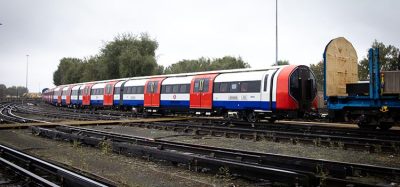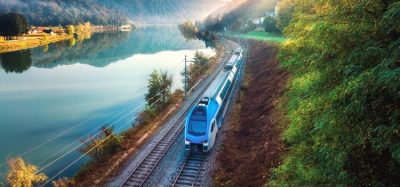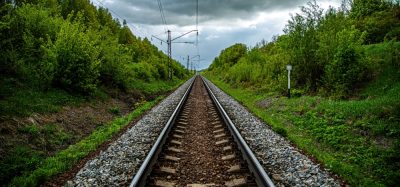Cross-border considerations
Posted: 3 April 2006 | | No comments yet
The opening of the European railway network initiated by the European Commission in the mid-1990s created numerous opportunities for the railways. However, differing standards still raise considerable barriers to cross-border rail traffic. Different voltage and train safety systems, for instance, impede the more flexible use of traction units. But a new generation of modern multi-system […]
The opening of the European railway network initiated by the European Commission in the mid-1990s created numerous opportunities for the railways. However, differing standards still raise considerable barriers to cross-border rail traffic.
Different voltage and train safety systems, for instance, impede the more flexible use of traction units. But a new generation of modern multi-system locomotives is now creating the conditions for cross-border operation. Multi-system locomotives sharpen the competitive edge of the railways especially in the freight sector. Their universal employment removes the need for time-consuming locomotive changing at borders, while simultaneously giving operators the confidence to open up new routes and thus new markets with relatively small investments.
Siemens Transportation Systems has made an important contribution to this with its Eurosprinter family. These Eurosprinters represent the latest state of the art in three-phase AC propulsion technology for universal locomotives of the highest performance classes and link modern technology and proven high reliability.
The cargo division of German Railways, Railion Deutschland AG, has stayed abreast of this development with the procurement of 100 Class 189 high-performance four-system locomotives. Developed by Siemens Transportation Systems from the new generation of Class 152 and 182 locomotives, which had already been sold in large numbers, the Class 189 can operate not only in alternating current networks at 15 kV 16.7 Hz and 25 kV 50 Hz, but also in direct current networks at 1.5 kV and 3 kV. To do this, these locomotives are fitted with all the electrical equipment necessary for operation throughout Europe and prepared for certification in Germany, Austria, Denmark, France, Hungary, Italy, Norway, Sweden, Switzerland, The Netherlands, Luxemburg, Belgium, Poland and the Czech Republic. Tractive power of 6,400 kilowatt can be achieved in alternating current networks, while the power in direct current systems is limited at 3 kV to 6,000 kilowatt, and at 1.5 kV to 4,200 kilowatt.
These locomotives with Bo’Bo’ wheel arrangement possess individual axle control and reach a top speed of 140 km/h. The high-speed bogies with centre pivot assembly designed to UIC leaflet specifications 518 fulfill the strict requirements for smooth rail running, maximum tractive and braking effort transmission and good riding quality.
The body of integrated all-steel construction complies with the vehicle structure gauge according to UIC 505-1. Fitted in the locomotives as nose-suspended drives, the traction motors are each fed with power drawn by a pulse-width modulated inverter from the DC link circuit. The DC link voltage is generated by four-quadrant choppers in alternating current networks, while the overhead line voltage can be fed directly into the DC link circuits in direct current networks.
A significant innovation meeting the extensive electrical and space requirements has been the use of water-cooled high-voltage IGBT traction inverters. The first-ever use of 6.5 kV IGBT inverters permits the line voltage in direct current networks to be fed directly into the DC link circuits without a step-down chopper.
The locomotives must fulfill numerous conditions that guarantee the necessary interoperability to be suitable for use in 15 European countries. This concerns especially the different train control systems. Up to three different related equipment variants are possible. The control elements in the driver’s console are provided with pictograms according to UIC 640. The important data for the driver is indicated on a DMI display (driver-machine interface) instead of the former modular cab display device.
Additional control elements such as the high-speed brake valve in the centre of the driver console, the emergency stop button on the right-hand departure controller, and buttons in the side consoles for the horn were also modified. Special signal lamps and headlights using LED technology were also developed. These ensure that the intensities and display of all required signal aspects and light colours of the various railway companies comply with the definitions in UIC leaflets 534 and 651.
Production model deliveries began in spring 2003 following intensive trials that had started in summer 2002, for example, in Austria, the Czech Republic and Hungary. The last of 101 Class 189 locomotives, for the time being, was just delivered to DB Railion on December 14, 2005. Siemens Switzerland had already delivered 12 multi-system locomotives of this type to SBB Cargo in May 2005. Those traction units, known under the SBB type designation Re 474, are conceived with the certifications necessary for cross-border traffic between Switzerland and Italy. These locomotives travel nonstop via Chiasso to Milan.
The newest member of the Eurosprinter family is the ES64U4. This locomotive combines the multi-system capability for AC and DC networks of the Class 189 from German Railways with the high-speed performance of the Taurus from Austrian Federal Railways (Type 1116) to enable operation at speeds up to 230 km/h. Significant modifications compared to the previously supplied Taurus locomotives concern the auxiliary converter unit integrated into the main converter, a new machine room ventilation with permanent overpressure, and the control system. All indicators and many control operations are performed via two redundant displays with touch screen functions. Speech output is automatically switched over after a system change.
The universal four-system locomotive with a maximum power rating of 6,400 kilowatt is designed for operation in the voltage systems 15 kV 16.7 Hz and 25 kV 50 Hz alternating current and 1.5 kV and 3 kV direct current. Individual country packages tailored to the planned range of operation are possible depending on customer requirements. The concept of extending a basic locomotive using a large number of identical parts results in a potential optimisation for spare parts stocking, operator-wide maintenance concepts, uniform operation, documentation and training as well as delivery times and certification processes. At the same time, a high degree of operational reliability results from the widespread use of identical parts. Apart from the country package components, the locomotive variants are completely identical.
The customer can therefore change the variant type at will during a short visit to the workshop. Customer packages are also offered that allow a certain degree of locomotive customisation in terms of driver’s cab furnishings and sanitary facilities or multiple traction and radio remote control. This definition of customer packages in the early phase of platform development promotes standardisation with the benefits of low-priced solutions and short delivery schedules. Customer requirements that go beyond this can be engineered separately as individual extras (tuning packages).
Austrian Federal Railways (ÖBB) will be the first railway administration to put this new locomotive into service as Type 1216. This is the result of a demand analysis culminating in the decision in favour to extend the operating range of the service-proven Taurus fleet to include the European 3 kV track network. In the context of the overall order for its Taurus fleet, ÖBB is initially buying 50 three-system locomotives.
Apart from Austria, the countries in which the new Taurus variant can be deployed include Germany, Italy, the Czech Republic, Slovakia and Slovenia. Siemens Transportation Systems handed over the first three locomotives built at its Munich-Allach plant to ÖBB on 31 March 2005. The production deliveries with final assembly at the ÖBB works in Linz will commence in 2006.
Beyond that, Slovenian State Railways (SZ) is another railway operator to order 20 multi-system locomotives of this type (Class 541). The locomotives, which will be built at the Siemens plant in Munich until 2008, are also to be provided with equipment for operation with overhead line voltages of 15 kV 16.7 Hz and 25 kV 50 Hz as well as with equipment for operation on lines electrified with 3 kV direct current. With this additional equipment, they will then be able to operate not only in Germany, Austria, Slovenia and Hungary, but also in Italy and Croatia. Until their delivery, Siemens Dispolok GmbH will provide SZ with four Class ES64F4 multi-system locomotives as a stop-gap measure.
Tailored solutions by Siemens Dispolok
Liberalisation of access to the European railway network has at the same time lead to a change in access behavior. More and more private rail freight companies are seizing the opportunity to operate trains themselves. The subsequently acquired transport contracts of short duration of one to three years do not permit large investments in locomotives. Siemens acted on this trend early and founded Siemens Dispolok GmbH on 2 January 2001 for the purpose of renting out locomotives. The 100 per cent subsidiary of Siemens AG has moreover been certified as an independent railway transport company since July 2002. In addition to the resulting benefits for debt servicing, the railway transport companies profit during a rental from the fact that periods of non-use after completion of a transport contract need not be calculated. On the contrary, the railways can fall back on the most modern locomotive generation in each case. Furthermore, Siemens Dispolok guarantees the know-how necessary to maintain and repair the computer-controlled high-performance locomotives in compliance with the manufacturer’s instructions and the valid railway guidelines.
Among others, the current Siemens Dispolok inventory of approximately 100 locomotives includes 30 Class ES64F4 four-system locomotives (analogous to German Railway’s Class 189) which are certified for operation in Germany, Austria, Italy, Switzerland and Slovenia. Five of these locomotives have been hauling freight trains nonstop between Munich and Verona over the Brenner route for the railway operators Lokomotion Gesellschaft für Schienentraktion and Rail Traction Company (RTC) since the beginning of 2005. It is the first time in the history of the Brenner railway that a locomotive change has been unnecessary – turning a vision into reality.
Traffic on the Brenner can be accelerated considerably by the use of interoperable locomotives. Elimination of the need to uncouple trains from AC locomotives for 15 kV 16.7 Hz to those for the Italian DC system at the Austrian-Italian border station, with the associated time-consuming shunting operations and brake tests, simplifies operations and optimises locomotive capacities. This has definitely sharpened the competitive edge of rail freight traffic in a shrinking Europe. Having experienced an increase of 29 per cent to 4,386 trains with 2.15 million metric tons of transported freight in 2004, the two partner companies Lokomotion and RTC expect a further 24 per cent increase in freight volume to 2.7 million tons in 2005. Currently, ten train pairs in intermodal traffic and three train pairs in general traffic travel over the 425-kilometer route from Munich to Verona five days per week. This means that Lokomotion/RTC have secured a market share of 30 per cent – in intermodal traffic even as much as 50 per cent – on the Brenner route.
There are also other routes suitable for international rail freight traffic hauled by modern multi-system locomotives. In May 2005, an interoperable train traveled over Austria’s Tauern Railway to Italy for the first time. Siemens is accommodating this development in the fleet policies at Siemens Dispolok GmbH with the provision of 15 more four-system locomotives.
Global Railway Review Autumn/ Winter Issue 2025
Welcome to 2025’s Autumn/ Winter issue of Global Railway Review!
The dynamism of our sector has never been more apparent, driven by technological leaps, evolving societal demands, and an urgent global imperative for sustainable solutions.
>>> Read the issue in full now! <<<







